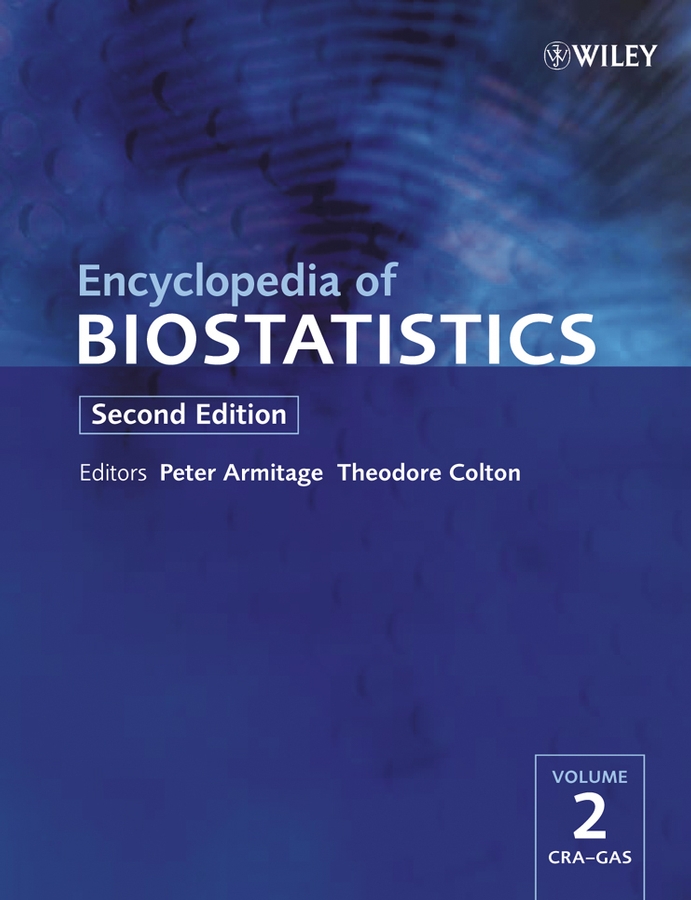AIDS and HIV
1
First published: 15 July 2005

References
- 1 Bacchetti, P. & Jewell, N. P. (1991). Nonparametric estimation of the incubation period of AIDS based on a prevalent cohort with unknown infection times, Biometrics 47, 947–960.
- 2 Bacchetti, P., Segal, M. R. & Jewell, N. P. (1993). Backcalculation of HIV infection rates, Statistical Science 8, 82–119.
- 3 Becker, N. G. & Chao, X. (1994). Dependent HIV incidences in back-projection of AIDS incidence data, Statistics in Medicine 13, 1945–1958.
- 4 Becker, N. G. & Marschner, I. C. (1993). A method for estimating the age-specific relative risk of HIV infection from AIDS incidence data, Biometrika 80, 165–178.
- 5 Becker, N. G., Watson, L. F. & Carlin, J. B. (1991). A method of non-parametric back-projection and its application to AIDS data, Statistics in Medicine 10, 1527–1542.
- 6 Brookmeyer, R. & Gail, M. H. (1994). AIDS Epidemiology: A Quantitative Approach. Oxford University Press, New York.
- 7 DeGruttola, V. & Lagakos, S. W. (1989). Analysis of doubly-censored survival data, with application to AIDS, Biometrics 45, 1–11.
- 8
Fusaro, R. E.,
Jewell, N. P.,
Hauck, W. W.,
Heilbron, D. C.,
Kalbfleisch, J. D.,
Neuhaus, J. M. &
Ashby, M. A.
(1989).
An annotated bibliography of quantitative methodology relating to the AIDS epidemic,
Statistical Science
4,
264–281.
10.1214/ss/1177012492 Google Scholar
- 9
Hethcote, H. W. &
Van Ark, J. W.
(1992).
Modelling HIV transmission and AIDS in the United States.
Springer-Verlag,
Berlin.
10.1007/978-3-642-51477-7 Google Scholar
- 10 Isham, V. (1989). Estimation of incidence of HIV infection, Philosophical Transactions of the Royal Society of London, Series B 325, 113–121.
- 11 Jewell, N. P. (1990). Some statistical issues in studies of the epidemiology of AIDS, Statistics in Medicine 9, 1387–1416.
- 12
N. P. Jewell,
K. Dietz &
V. T. Farewell, eds
(1992).
AIDS Epidemiology: Methodological Issues.
Birkhäuser,
Boston.
10.1007/978-1-4757-1229-2 Google Scholar
- 13 Kalbfleisch, J. D. & Lawless, J. F. (1989). Inference based on retrospective ascertainment: an analysis of the data on transfusion-related AIDS, Journal of the American Statistical Association 84, 360–372.
- 14 Kalbfleisch, J. D. & Lawless, J. F. (1991). Regression models for right truncated data with applications to AIDS incubation times and reporting lags, Statistica Sinica 1, 19–32.
- 15 Kaplan, E. H. (1990). Modeling HIV infectivity: must sex acts be counted?, Journal of AIDS 3, 55–61.
- 16 Kim, H. M. & Lagakos, S. W. (1993). Assessing drug compliance using longitudinal marker data, with application to AIDS, Statistics in Medicine 13, 2141–2153.
- 17 Lagakos, S. W., Barraj, L. M. & DeGruttola, V. (1988). Nonparametric analysis of truncated survival data with applications to AIDS, Biometrika 75, 515–523.
- 18 Liao, J. & Brookmeyer, R. (1995). An empirical Bayes approach to smoothing in backcalculation of HIV infection rates, Biometrics 51, 579–588.
- 19 Lui, K. -J., Peterman, T. A., Lawrence, D. N. & Allen, J. R. (1988). A model-based approach to characterize the incubation period of paediatric transfusion-associated Acquired Immunodeficiency Syndrome, Statistics in Medicine 7, 395–401.
- 20 Medley, G. F., Billard, L., Cox, D. R. & Anderson, R. M. (1988). The distribution of the incubation period for the acquired immunodeficiency syndrome (AIDS), Proceedings of the Royal Society of London, Series B 233, 267–277.
- 21
Pagano, M.,
DeGruttola, V.,
MaWhinney, S. &
Tu, X. M.
(1992).
The HIV epidemic in New York City: projecting AIDS incidence and prevalence, in
AIDS Epidemiology: Methodological Issues,
N. P. Jewell,
K. Dietz &
V. T. Farewell, eds.
Birkhäuser,
Boston,
pp. 123–142.
10.1007/978-1-4757-1229-2_6 Google Scholar
- 22 Rida, W. N. & Lawrence, D. N. (1994). Some statistical issues in HIV vaccine trials, Statistics in Medicine 13, 2155–2177.
- 23 Rosenberg, P. S. (1990). A simple correction of AIDS surveillance data for reporting delays, Journal of AIDS 3, 49–54.
- 24 Rosenberg, P. S. & Gail, M. H. (1991). Backcalculation of flexible linear models of the human immunodeficiency virus infection curve, Journal of the Royal Statistical Society, Series C 40, 269–282.
- 25 Shiboski, S. & Jewell, N. P. (1990). Statistical analysis of HIV infectivity based on partner studies, Biometrics 46, 1133–1150.
- 26 Sun, J. (1995). Empirical estimation of a distribution function with truncated and doubly interval-censored data and its application to AIDS studies, Biometrics 51, 1096–1104.
- 27 Taylor, J. M. G. (1989). Models for the HIV infection and AIDS epidemic in the United States, Statistics in Medicine 8, 45–58.
- 28 Tu, X. M., Litvak, E. & Pagano, M. (1994). Screening tests: can we get more by doing less?, Statistics in Medicine 13, 1905–1919.
- 29 Zeger, S. L., See, L. -C. & Diggle, P. J. (1989). Statistical methods for monitoring the AIDS epidemic, Statistics in Medicine 8, 3–21.



